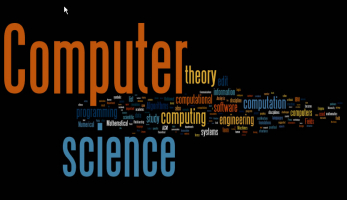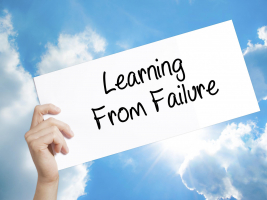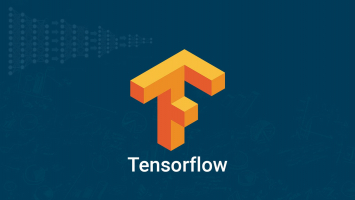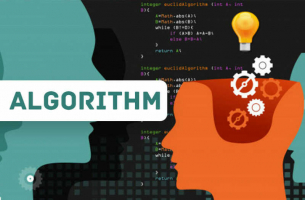Top 10 Best Books On Bioinformatics
Understanding the fundamentals of bioinformatics might be difficult for beginners if they do not have access to a decent resource or book. There is so much to ... read more...learn about the bioinformatics, and so many frameworks or libraries are released every week, that it's difficult to know where to begin. Not just beginners, but even experienced one, look for good materials or publications to help you improve your skills. Toplist has produced a list of the best books on bioinformatics to help you with your studying.
-
Cath Ennis is a grant writer and project manager in Vancouver, Canada, with a background in genetics, genomics, and cancer research. She contributes to The Guardian on epigenetics and other themes, has co-written a textbook on stem cell science, and can be found online at enniscath.com.
The most intriguing subject in biology now is epigenetics, which is advancing our understanding of how and why we inherit particular features, develop diseases, age, and evolve as a species.
Introducing Epigenetics introduces us to genetics, cell biology, and the exciting science of epigenetics, which is rapidly closing knowledge gaps and allowing us to make significant improvements in medicine. We'll look at what identical twins may teach us about the epigenetic effects of our environment and experiences, why specific genes are "turned on" or "switched off" at different stages of embryonic development, and how scientists reversed cell specialization to clone frogs from a single gut cell. The book is among the best books on bioinformatics you should read.
Cath Ennis and Oliver Pugh dissect the double helix in Introducing Epigenetics, looking at how the epigenetic building blocks and messengers that interpret and change our DNA serve to create us.
Author: Cath Ennis
Link to buy: https://www.amazon.com/Introducing-Epigenetics-Graphic-Guide-ebook/dp/B01CNZGEOA/
Ratings: 4.4 out of 5 stars (from 172 reviews)
Best Sellers Rank: #22,596 in Kindle Store
#1 in Bioinformatics (Kindle Store)
#2 in Bioinformatics (Books)
#3 in Genetic Science
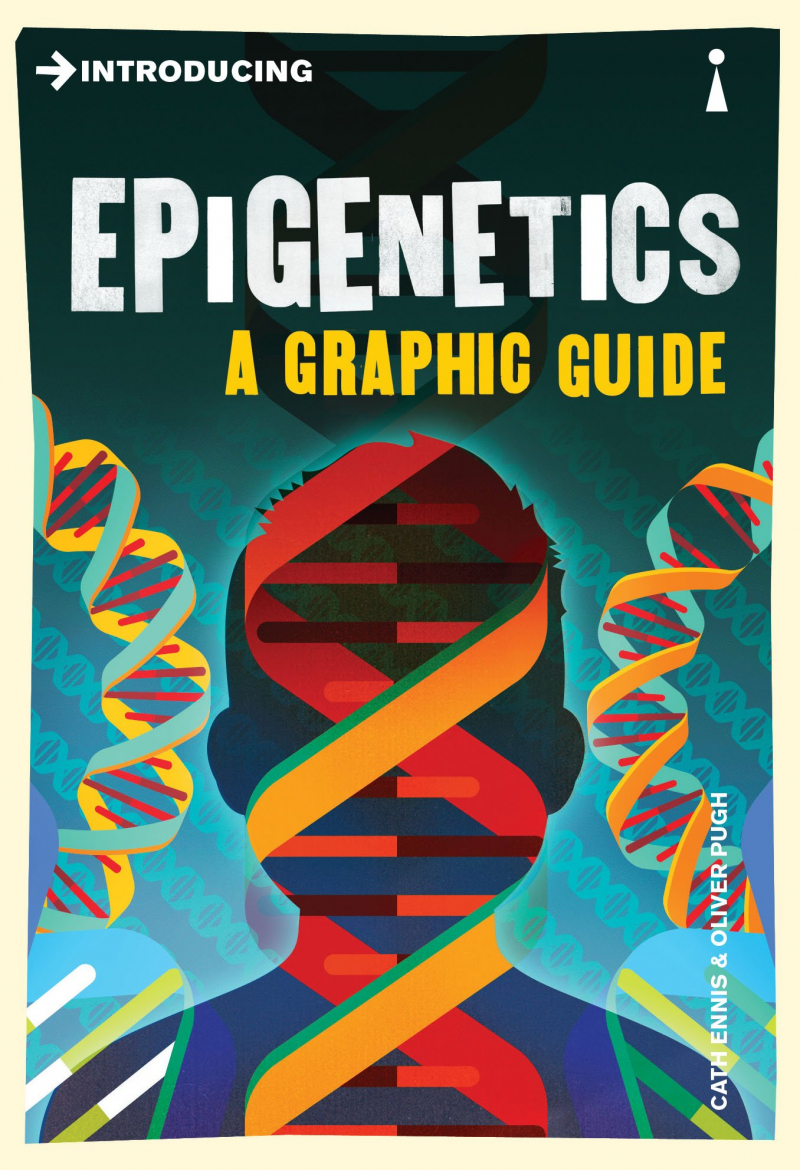
https://www.amazon.com/ 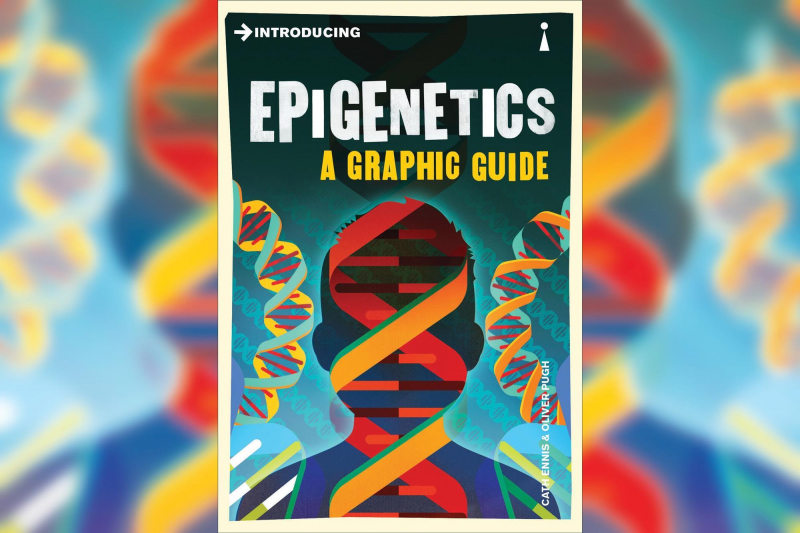
chemistryworld.com -
Chris Bishop is the Laboratory Director of Microsoft Research Cambridge and a Microsoft Distinguished Scientist. He is also a Fellow of Darwin College, Cambridge, and a Professor of Computer Science at the University of Edinburgh. He was named Fellow of the Royal Academy of Engineering in 2004, and Fellow of the Royal Society of Edinburgh in 2007. Chris graduated from Oxford with a BA in Physics and from the University of Edinburgh with a PhD in Theoretical Physics and a thesis on quantum field theory.
This is the first pattern recognition textbook to present the Bayesian viewpoint. Pattern Recognition and Machine Learning discusses approximate inference techniques, which allow for quick approximate responses in situations where exact answers are not possible. When no other books employ graphical models to machine learning, it uses them to characterize probability distributions. There is no presumption of prior understanding of pattern recognition or machine learning ideas. A working knowledge of multivariate calculus and basic linear algebra is necessary, as is some expertise with probabilities, however this is not required because the book offers a self-contained introduction to basic probability theory.
Author: Christopher M. Bishop
Link to buy: https://www.amazon.com/Pattern-Recognition-Learning-Information-Statistics/dp/0387310738/
Ratings: 4.6 out of 5 stars (from 630 reviews)
Best Sellers Rank: #115,761 in Books
#9 in Bioinformatics (Books)
#18 in Computer Vision & Pattern Recognition
#42 in Artificial Intelligence (Books)
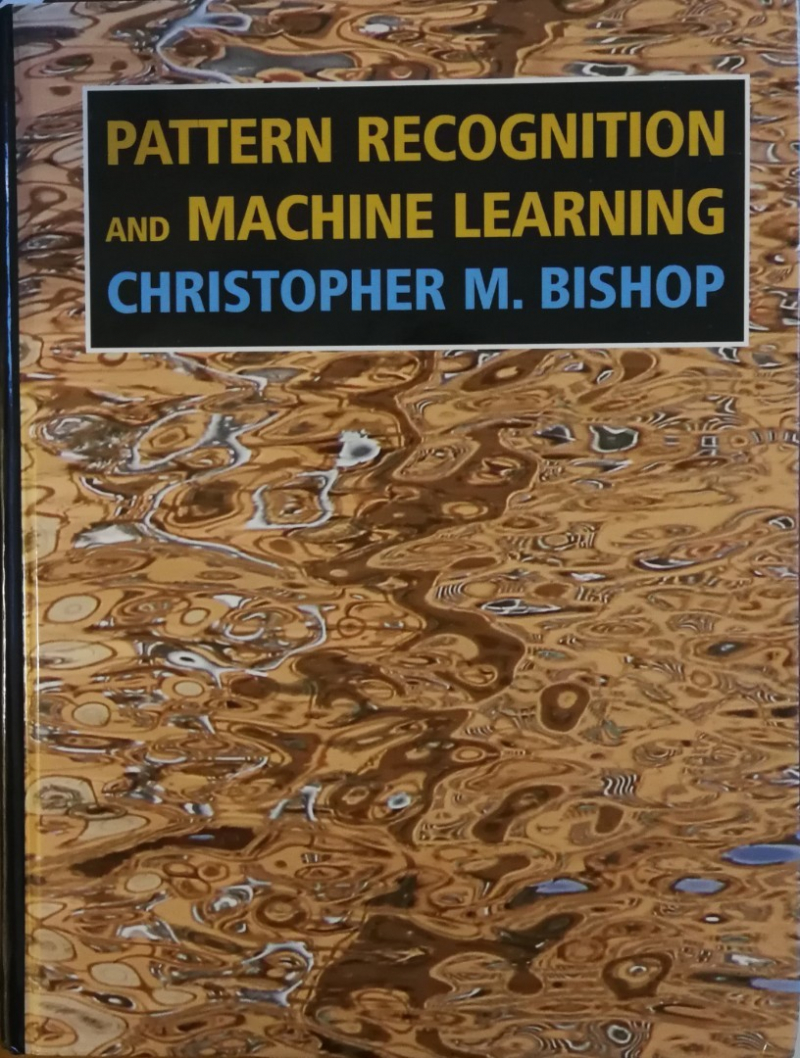
carousell.sg 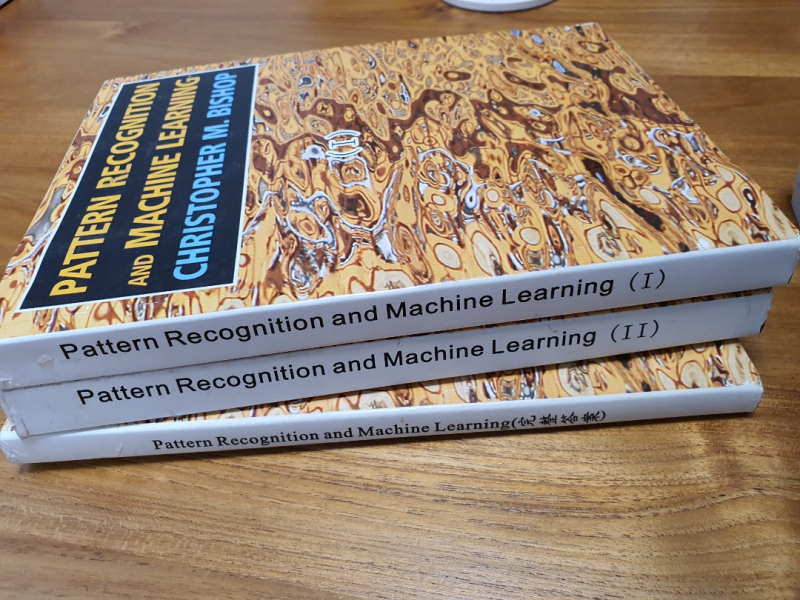
carousell.sg -
Stanford University statistics professors Trevor Hastie, Robert Tibshirani, and Jerome Friedman They are well-known researchers in this field: Hastie and Tibshirani created generalized additive models and produced a bestselling book with the same name. Hastie invented main curves and surfaces and co-developed most of the statistical modeling tools and environment in R/S-PLUS. Tibshirani invented the lasso and is co-author of the best-selling An Introduction to Bootstrap. Friedman co-invented numerous data-mining technologies, including CART, MARS, projection pursuit, and gradient boosting.
In a shared conceptual framework, The Elements of Statistical Learning presents essential ideas in a number of professions such as medical, biology, finance, and marketing. Despite the statistical approach, the emphasis is on concepts rather than mathematics. Many examples are provided, with extensive use of color visuals. It's an excellent resource for statisticians and anyone else interested in data mining in research or industry. The book covers a wide range of topics, from supervised learning (prediction) to unsupervised learning. Among the several subjects covered are neural networks, support vector machines, classification trees, and boosting, which is the first complete coverage of this topic in any book.
Many areas not included in the original are covered in this important new edition, including graphical models, random forests, ensemble methods, least angle regression & path algorithms for the lasso, non-negative matrix factorisation, and spectral clustering. A chapter on approaches for "broad" data (p greater than n), covering multiple testing and false discovery rates, is also included.
Author: Trevor Hastie, Robert Tibshirani, and Jerome Friedman
Link to buy: https://www.amazon.com/Elements-Statistical-Learning-Prediction-Statistics/dp/0387848576/
Ratings: 4.6 out of 5 stars (from 966 reviews)
Best Sellers Rank: #53,971 in Books
#3 in Bioinformatics (Books)
#16 in Artificial Intelligence (Books)
#23 in Data Mining (Books)
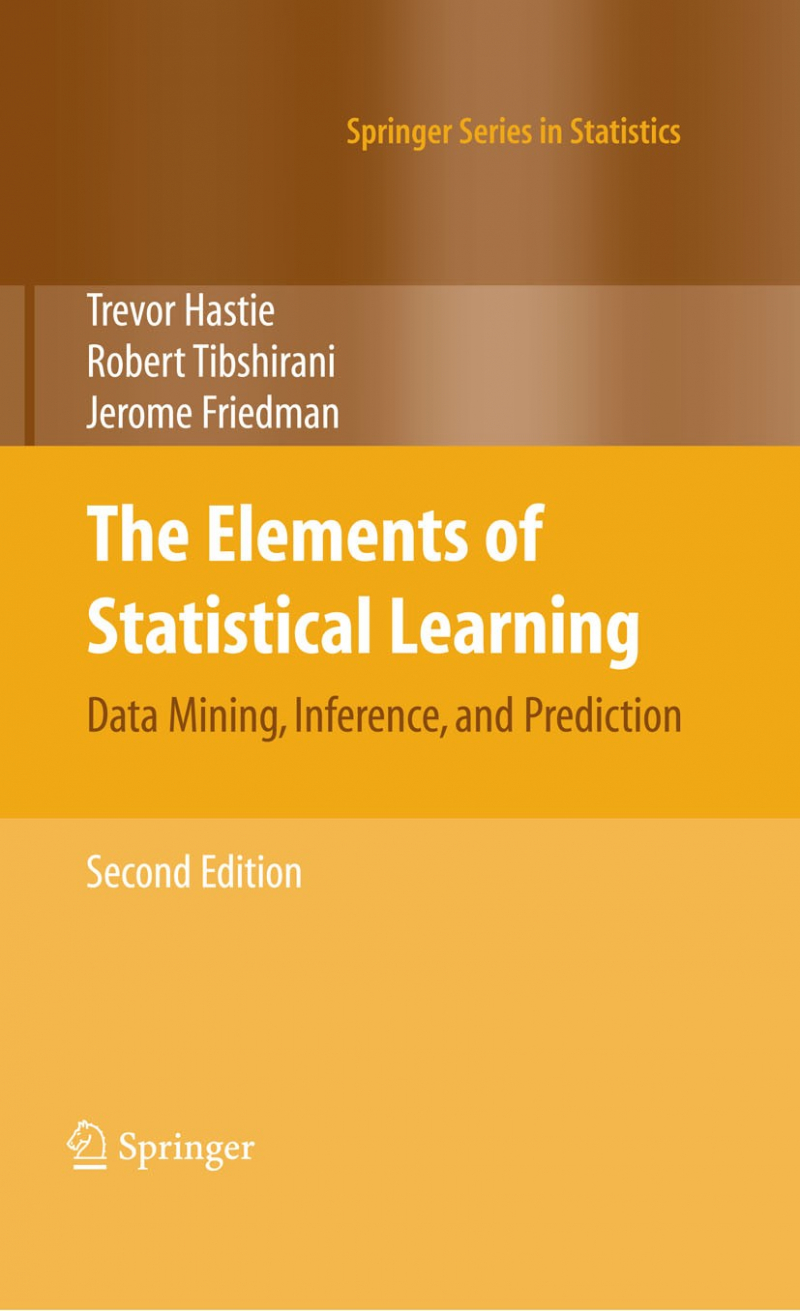
link.springer.com 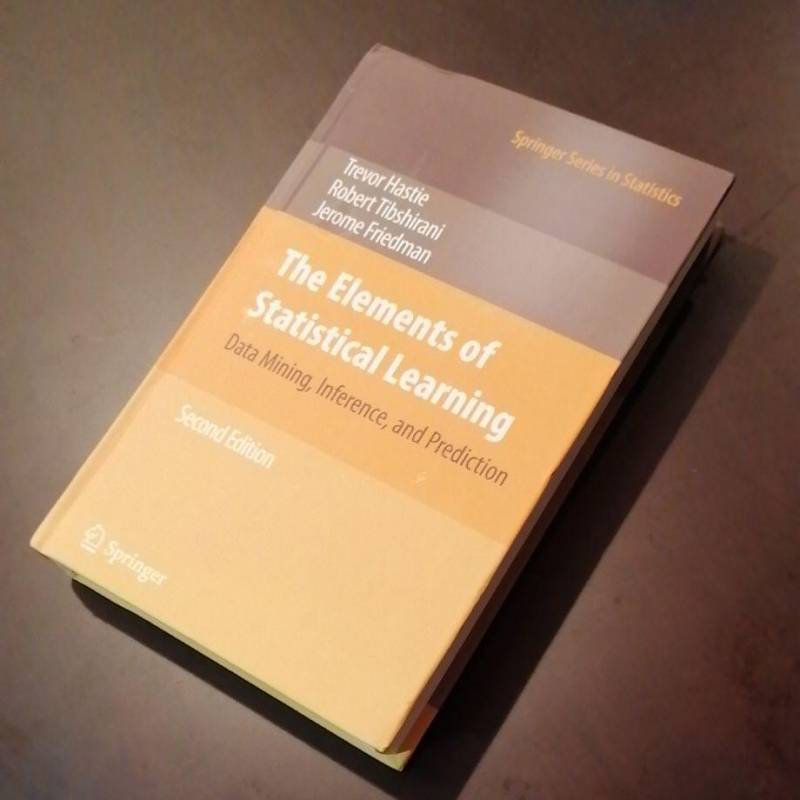
buyee.jp -
Kevin R. Fall, Ph.D., has over twenty-five years of experience with TCP/IP and has served on the Internet Architecture Board. He is one of the co-chairs of the Internet Research Task Force's Delay Tolerant Networking Research Group (DTNRG), which studies networking in harsh and performance-challenged conditions. He is a member of the IEEE.
W. Richard Stevens, Ph.D. (1951-1999), was a pioneering author who taught a generation of network professionals the TCP/IP abilities that have enabled the Internet to become a part of daily life. His best-selling publications included TCP/IP Illustrated (Addison-Wesley) in all three volumes, as well as UNIX Network Programming (Prentice Hall).
TCP/IP Illustrated, Volume 1, Second Edition is a comprehensive and visually illustrative guide to today's TCP/IP protocol stack. It is fully updated for the most recent advances and shows each protocol in action using realistic examples from modern Linux, Windows, and Mac OS environments. There is no better method to learn why TCP/IP works the way it does, how it responds to typical scenarios, and how to use it in your own applications and networks.
Author Kevin R. Fall adds his cutting-edge experience as a leader in TCP/IP protocol research to the late W. Richard Stevens' classic first edition, updating the book to fully reflect the latest protocols and best practices. He begins by introducing TCP/key IP's goals and architectural concepts, demonstrating how they may connect various networks and support many services running concurrently. Following that, he thoroughly describes Internet addressing in both IPv4 and IPv6 networks. Then he walks through TCP/structure IP's and function from the ground up, starting with link layer protocols like Ethernet and Wi-Fi and progressing through network, transport, and application layers.
Fall covers ARP, DHCP, NAT, firewalls, ICMPv4/ICMPv6, broadcasting, multicasting, UDP, DNS, and many more topics. He covers a wide range of topics related to reliable transport and TCP, such as connection management, timeout, retransmission, interactive data flow, and congestion control. Finally, he covers the fundamentals of security and cryptography, as well as the critical current protocols for safeguarding security and privacy, such as EAP, IPsec, TLS, DNSSEC, and DKIM. Whatever your level of TCP/IP knowledge, this book will help you obtain a deeper, more intuitive grasp of the whole protocol suite, allowing you to build better applications and run more reliable, efficient networks.
Author: W. Richard Stevens and Kevin R. Fall
Link to buy: https://www.amazon.com/TCP-Illustrated-Protocols-Addison-Wesley-Professional/dp/0321336313/
Ratings: 4.6 out of 5 stars (from 199 reviews)
Best Sellers Rank: #109,533 in Books
#2 in TCP-IP
#7 in Bioinformatics (Books)
#75 in Computer Networking (Books)
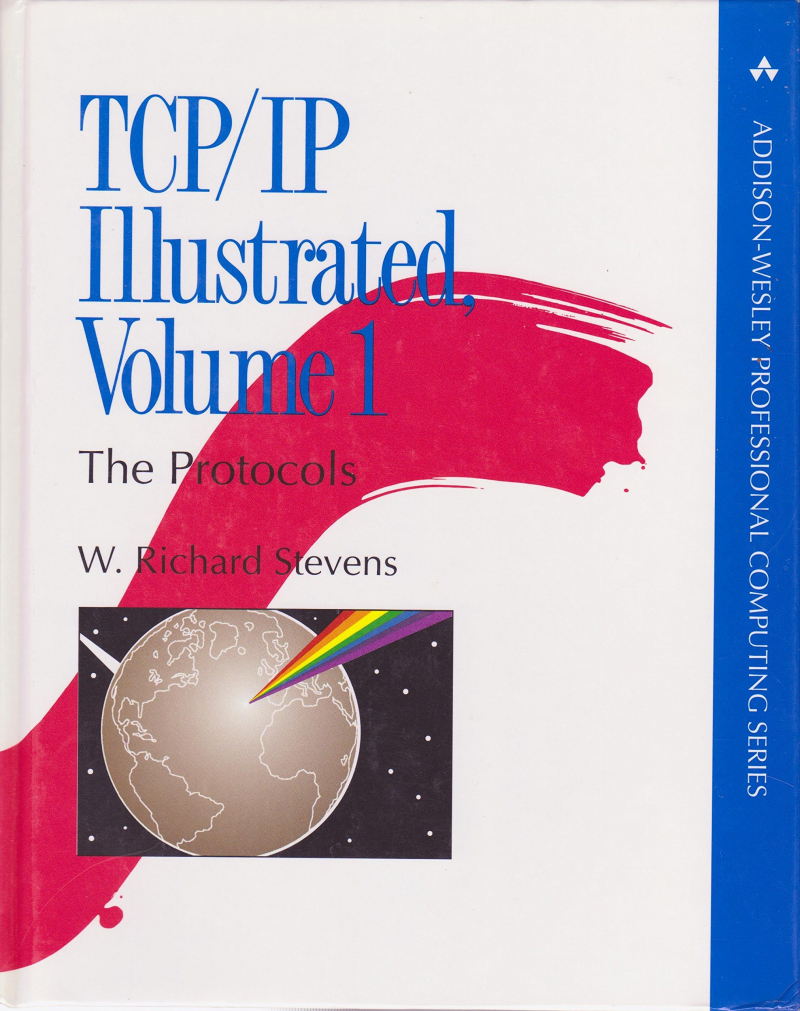
amazon.co.uk 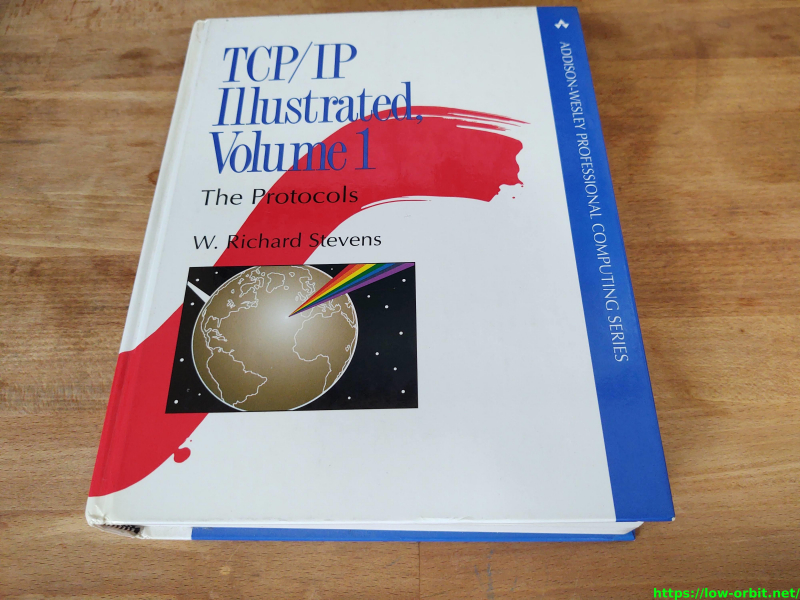
low-orbit.net -
Jean-Michel Claverie is Professor of Medical Bioinformatics at the Université de la Méditerranée School of Medicine and a genomics and bioinformatics consultant. Cedric Notredame works as a researcher at the National Centre for Scientific Research in France. Cedric has toured Europe using and abusing the tools provided by science.
Were you always interested in biology but were put off by the thought of sitting through long hours of thick reading? Did you enjoy the subject in high school but had other aspirations after graduation? You may now study the human genome and analyze DNA without leaving your computer!
Bioinformatics For Dummies is jam-packed with useful material that will introduce you to this exciting new field. This simple guide walks you through every bioinformatics task that can be completed via the Internet. Forget about complex mathematics, technological jargon, and installing large apps that slow down your machine. You'll be shocked at how much you can accomplish simply by checking in and following these simple instructions. You obtain the necessary tools to:
- Analyze all sequence types.
- Use a variety of databases.
- Utilize DNA and protein sequences
- Perform similarity searches
- Construct a multiple sequence alignment.
- Alignments can be edited and published.
- 3D visualization of protein structures
- Create phylogenetic trees
This updated second edition contains freshly produced and popular databases and Internet apps, as well as several additional genomes. It offers advice on how to use servers and where to go for resources to learn about what's going on in the field of bioinformatics. Among the best books on bioinformatics, Bioinformatics For Dummies will teach you how to make the most of your computer and the appropriate Web tools so you can search databases and analyze sequences like an expert!
Author: Jean-Michel ClaverieCedric Notredame
Link to buy: https://www.amazon.com/Bioinformatics-Dummies-Jean-Michel-Claverie/dp/0470089857/
Ratings: 4.3 out of 5 stars (from 109 reviews)
Best Sellers Rank: #69,661 in Books
#4 in Bioinformatics (Books)
#6 in Internet Web Browsers
#18 in Biotechnology (Books)
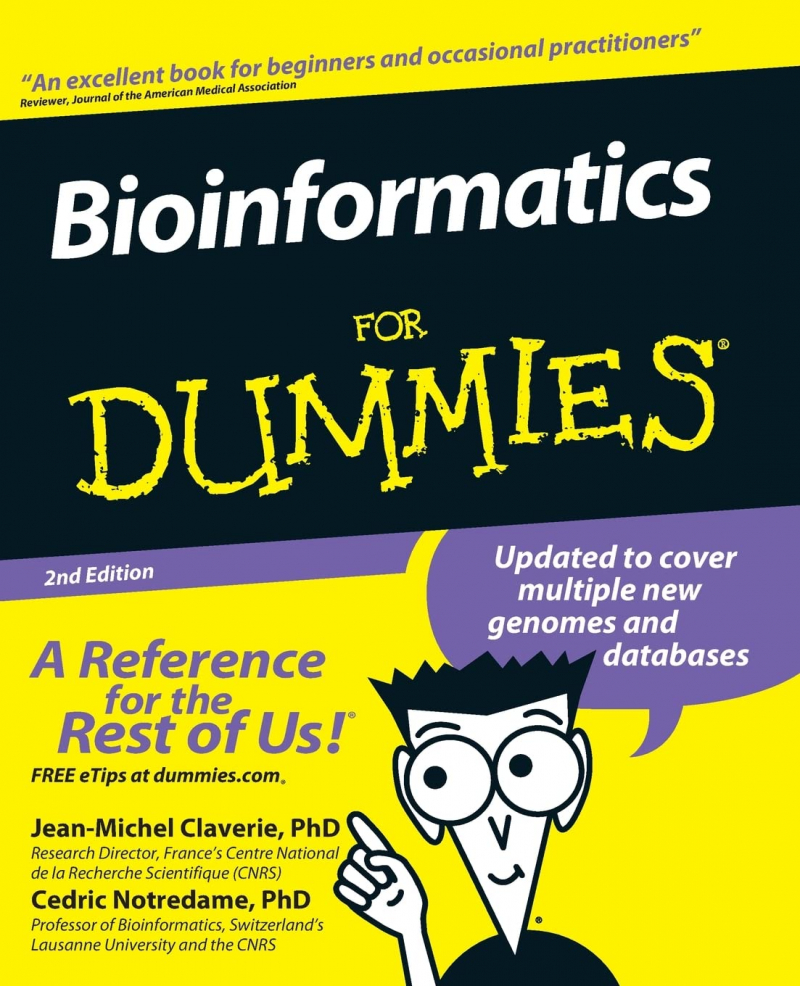
amazon.co.uk 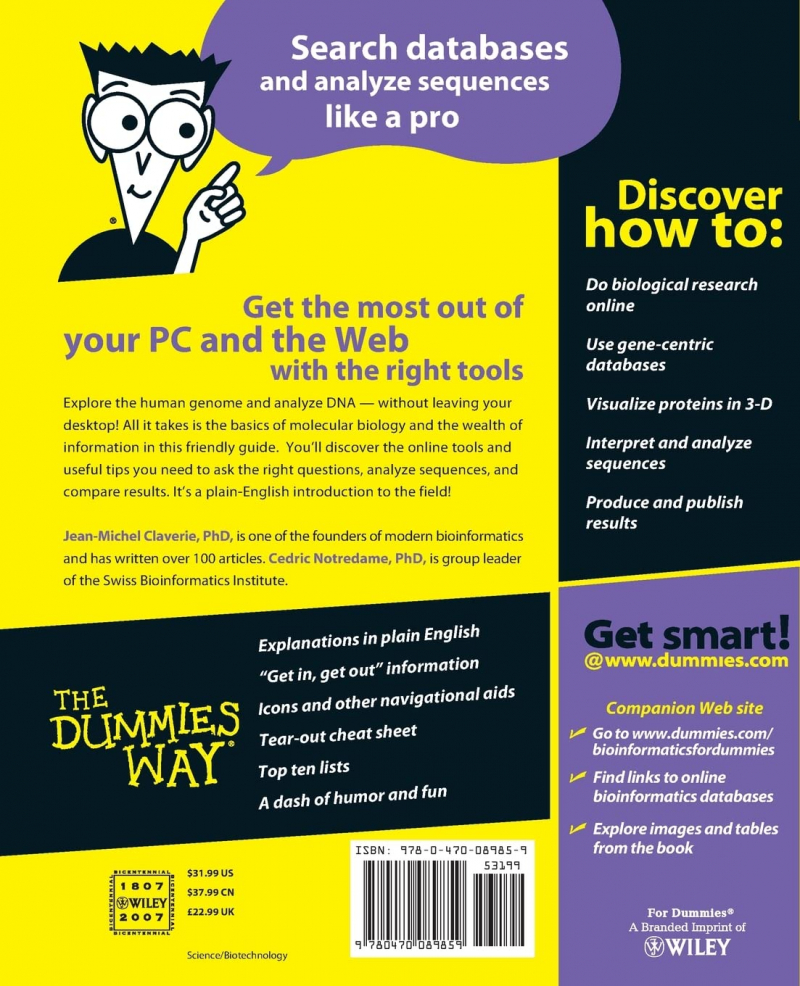
amazon.ca -
John C. Pezzullo, PhD, has held faculty positions at Georgetown University in the departments of biomathematics and biostatistics, pharmacology, nursing, and internal medicine. He is semi-retired and still teaches biostatistics and clinical trial design to Georgetown University students online.
Students studying medicine, epidemiology, forestry, agriculture, bioinformatics, and public health must take biostatistics. In the past, this course was primarily a graduate-level requirement; however, its application is expanding, and undergraduate course offerings are expanding. Biostatistics For Dummies is a wonderful resource for individuals taking a course or looking for a quick reference to this complex subject.
Biostatisticians, or biological data analysts, are tasked with answering some of the world's most important health problems, such as how safe and effective pharmaceuticals on the market today are. What factors contribute to autism? What are the cardiovascular disease risk factors? Are there different risk factors for males and women, or for various ethnic groups? Biostatistics For Dummies investigates these and other issues related to the study of biostatistics.
- To assist, it provides plain-English descriptions of methodologies as well as clinical cases.
- This book is a fantastic course supplement for students who are struggling with the complexity of biostatistics.
- Tracks correspond to a standard basic biostatistics course.
Biostatistics For Dummies is a fantastic resource for anyone attempting to complete this challenging course.
Author: John Pezzullo
Link to buy: https://www.amazon.com/Biostatistics-Dummies-John-Pezzullo/dp/1118553985/
Ratings: 4.4 out of 5 stars (from 351 reviews)
Best Sellers Rank: #294,425 in Books
#32 in Biostatistics (Books)
#53 in Bioinformatics (Books)
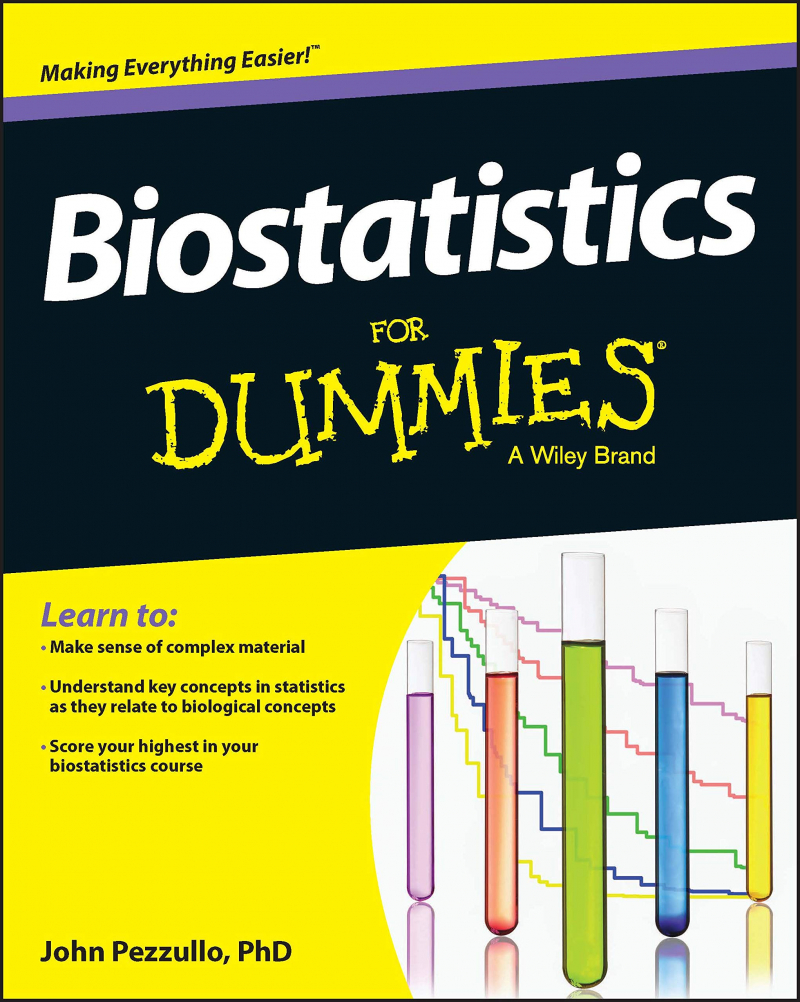
amazon.ca 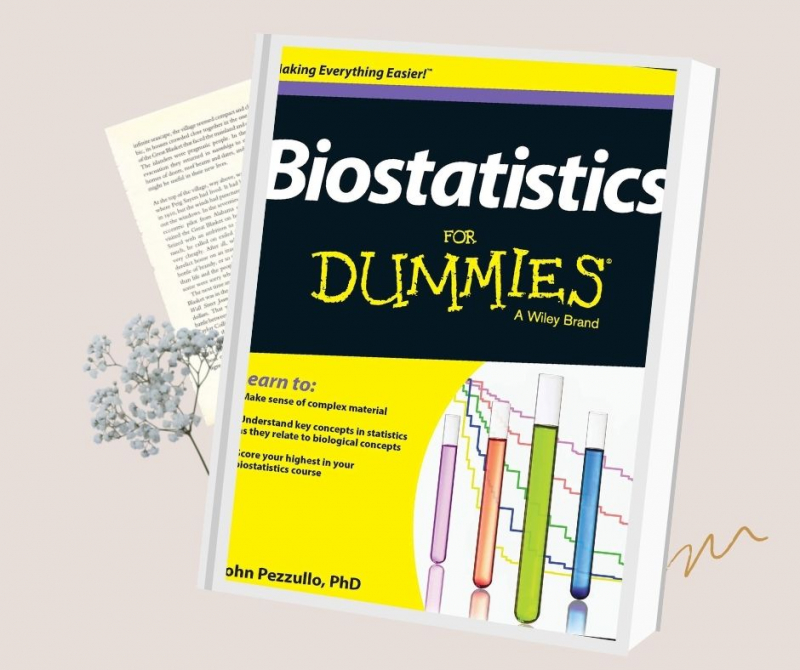
amazon.ca -
Richie is a data scientist with a background in chemical health and safety. He has spent a significant amount of time developing tools that allow non-technical users to access statistical models. He created the R packages "assertive" for testing the status of your variables and "sig" for ensuring your functions have a logical API. He owns The Damned Liars statistics firm.
Even if you have no programming knowledge, you may learn how to perform data analysis using the R language and software environment. The tutorials in this hands-on book will teach you how to use the basic R tools you'll need to analyze data, such as data types and programming ideas. It is regarded as one of the best books on bioinformatics.
The second half of Learning R walks you through real-world data analysis, from importing data to publishing your findings. Each chapter closes with activities, the majority of which involve developing R code, and includes an exam on what you've learned.
- Create a basic R program to see what the language is capable of.
- Use vectors, arrays, lists, data frames, and strings as data types.
- Use branches and loops to execute code conditionally or repeatedly.
- Use R add-on packages and package your own work for others to use.
- Learn how to sanitize data imported from various sources.
- Visualization and summary statistics can help you understand data.
- Make quantitative judgments about data and forecasts using statistical models.
- Find out what to do if something goes wrong when writing data analysis code.
Author: Richard Cotton
Link to buy: https://www.amazon.com/Learning-Step-Step-Function-Analysis/dp/1449357105/
Ratings: 4.4 out of 5 stars (from 145 reviews)
Best Sellers Rank: #103,073 in Books
#6 in Bioinformatics (Books)
#34 in Mathematical & Statistical Software
#50 in Data Modeling & Design (Books)
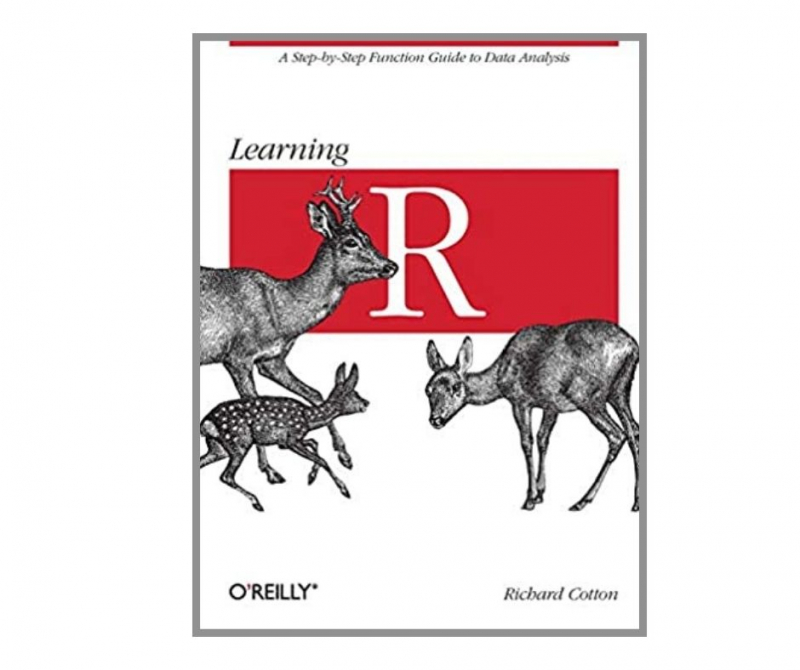
https://www.amazon.com/ 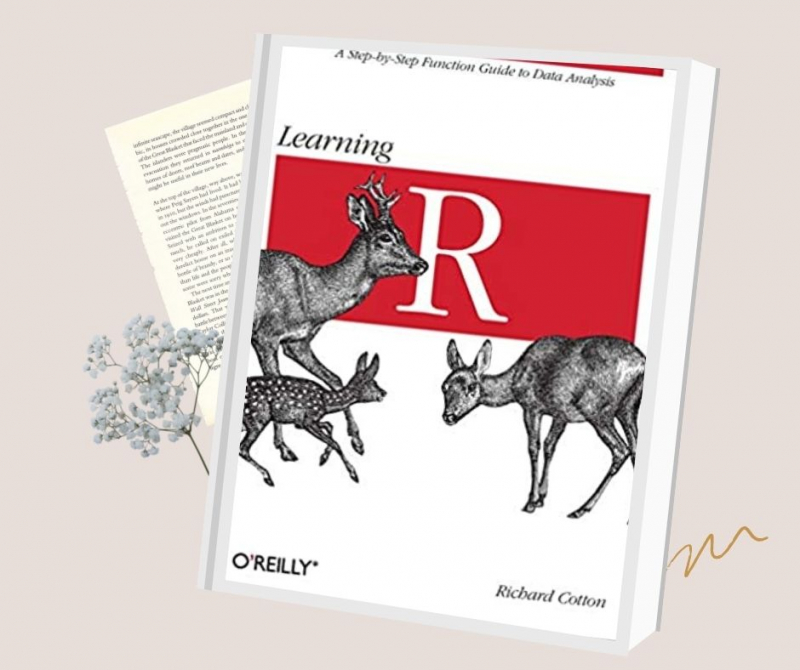
https://www.amazon.com/ -
Jonathan Pevsner got his Ph.D. in Pharmacology and Molecular Sciences from Johns Hopkins in 1989, and then went on to perform postdoctoral research at Stanford University in the Department of Molecular and Cellular Physiology (1989-1995). He joined the Department of Neurology faculty at the Kennedy Krieger Institute in Baltimore, where he is now a Professor.
Bioinformatics and Functional Genomics, which has been well regarded in previous editions, provides the most comprehensive introduction to this dynamic new science. It is still the go-to source for students and professionals working in biomedical research, even in its extensively revised and extended third edition.
This book covers the most recent developments in the disciplines of bioinformatics and genomics. This edition includes the following new features:
- Extensive modifications and reordering of chapters for better organization
- A new chapter on next-generation sequencing has been added.
- An enlarged companion website, which is also updated as new information becomes available.
- Greater emphasis on a computational approach, with clear advice on how software tools work and introductions to the usage of command-line tools such as next-generation sequence analysis software, the R programming language, and NCBI search utilities.
Bioinformatics and Functional Genomics is supported by sumptuous drawings and over 500 figures and tables, many of which were designed specifically for the third edition to improve clarity and understanding. Each chapter has learning objectives, a problem set, a pitfalls section, boxes discussing key approaches and mathematics/statistics principles, a summary, recommended reading, and a list of free software.
The Third Edition of Bioinformatics and Functional Genomics is a great single-source textbook for advanced undergraduate and early graduate-level courses in the biological sciences and computer sciences. It is also an invaluable resource for biologists from a wide range of disciplines who use bioinformatics and genomics tools to investigate specific research problems; bioinformaticists and computer scientists who create computer algorithms and databases; and medical researchers and clinicians who want to understand the genomic basis of viral, bacterial, parasitic, or other diseases.
Author: Jonathan Pevsner
Link to buy: https://www.amazon.com/Bioinformatics-Functional-Genomics-Jonathan-Pevsner/dp/1118581784/
Ratings: 4.2 out of 5 stars (from 73 reviews)
Best Sellers Rank: #100,672 in Books
#5 in Bioinformatics (Books)
#68 in Biochemistry (Books)
#90 in Genetics (Books)
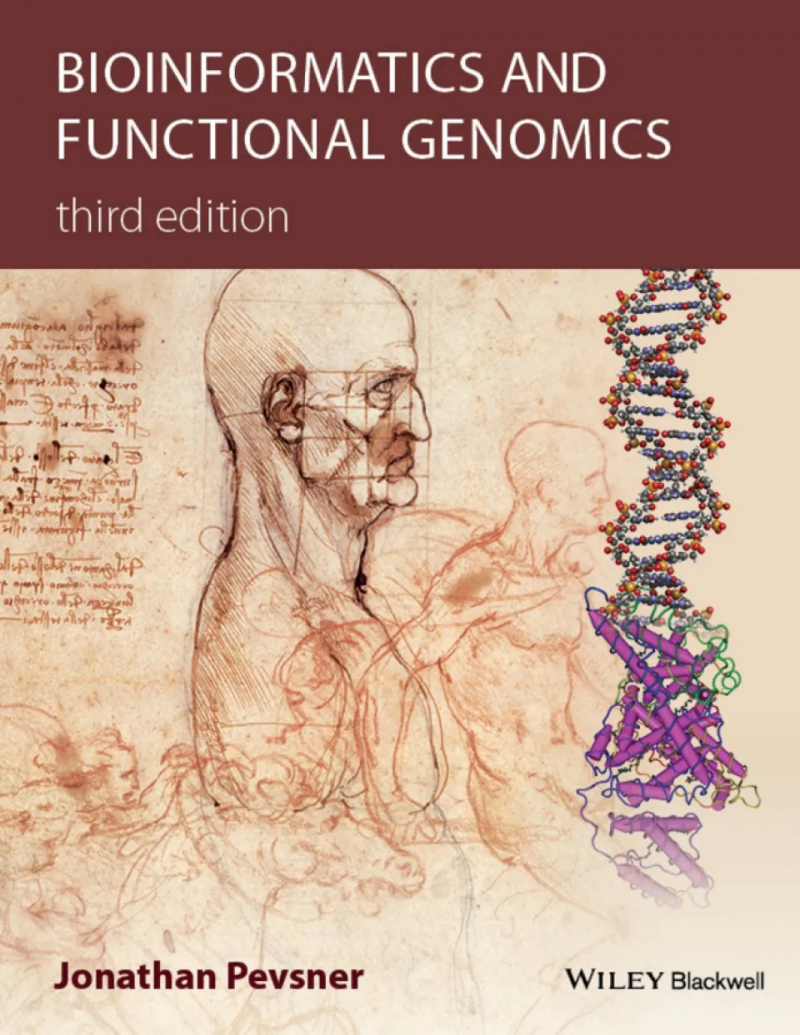
nhbs.com 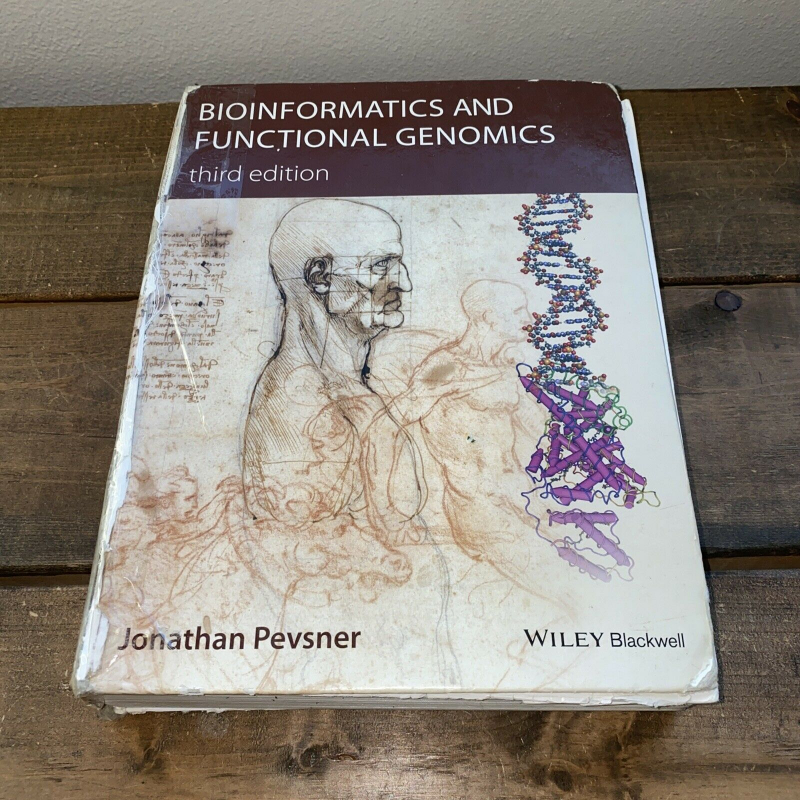
ebay.com -
Eric Topol, MD, is a world-renowned cardiologist, Scripps Research's Executive Vice President, the founder of a new medical school, and one of the top ten most cited medical researchers. He lives in La Jolla, California, and is the author of The Patient Will See You Now and The Creative Destruction of Medicine.
A trip to the doctor nearly always results in anguish. You'll make a reservation months in advance. You'll most likely wait several hours before hearing "the doctor will see you now"—but only for fifteen minutes! Then you'll have to wait even longer for lab findings, which you'll very certainly never see unless they indicate more (and more invasive) testing, the majority of which will almost certainly be unnecessary (much like physicals themselves). And your bill will be exorbitant.
Eric Topol, one of the country's best physicians, explains in The Patient Will See You Now why medicine does not have to be this way. Instead, you could use your smartphone to obtain rapid test results from a single drop of blood, monitor your vital signs throughout the day and night, and use an artificially intelligent algorithm to receive a diagnosis without having to see a doctor, all for a fraction of the cost imposed by our modern healthcare system.
The shift is being driven by what Topol refers to as medicine's "Gutenberg moment." The mobile internet is doing the same thing for medicine as the printing press did for learning, giving us unparalleled control over our healthcare. We are no longer reliant on an impersonal and paternalistic system in which "doctor knows best" because we have cellphones in our hands. Topol contends that medicine has been digitized and will now be democratized. Computers will replace physicians for many diagnostic jobs, citizen science will give rise to citizen medicine, and massive data sets will provide us with new ways to combat long-incurable diseases. Enormous, open, internet medicine, in which diagnostics are performed through Facebook-like comparisons of medical profiles, will allow for real-time, real-world study on massive populations. There is little doubt that the road ahead will be difficult: the medical establishment will fight these developments, and digitized medicine will certainly raise severe privacy concerns. Nonetheless, the end result-better, less expensive, and more human health care-will be worthwhile.
Among the best books on bioinformatics, The Patient Will See You Now is essential reading for anyone who believes they deserve better health care. It is provocative and engrossing. That applies to all of us.
Author: Eric Topol MD
Link to buy: https://www.amazon.com/Patient-Will-See-You-Now/dp/0465040020/
Ratings: 4.5 out of 5 stars (from 321 reviews)
Best Sellers Rank: #339,607 in Books
#56 in Biomedical Engineering
#58 in Nursing Long-Term Care
#62 in Bioinformatics (Books)
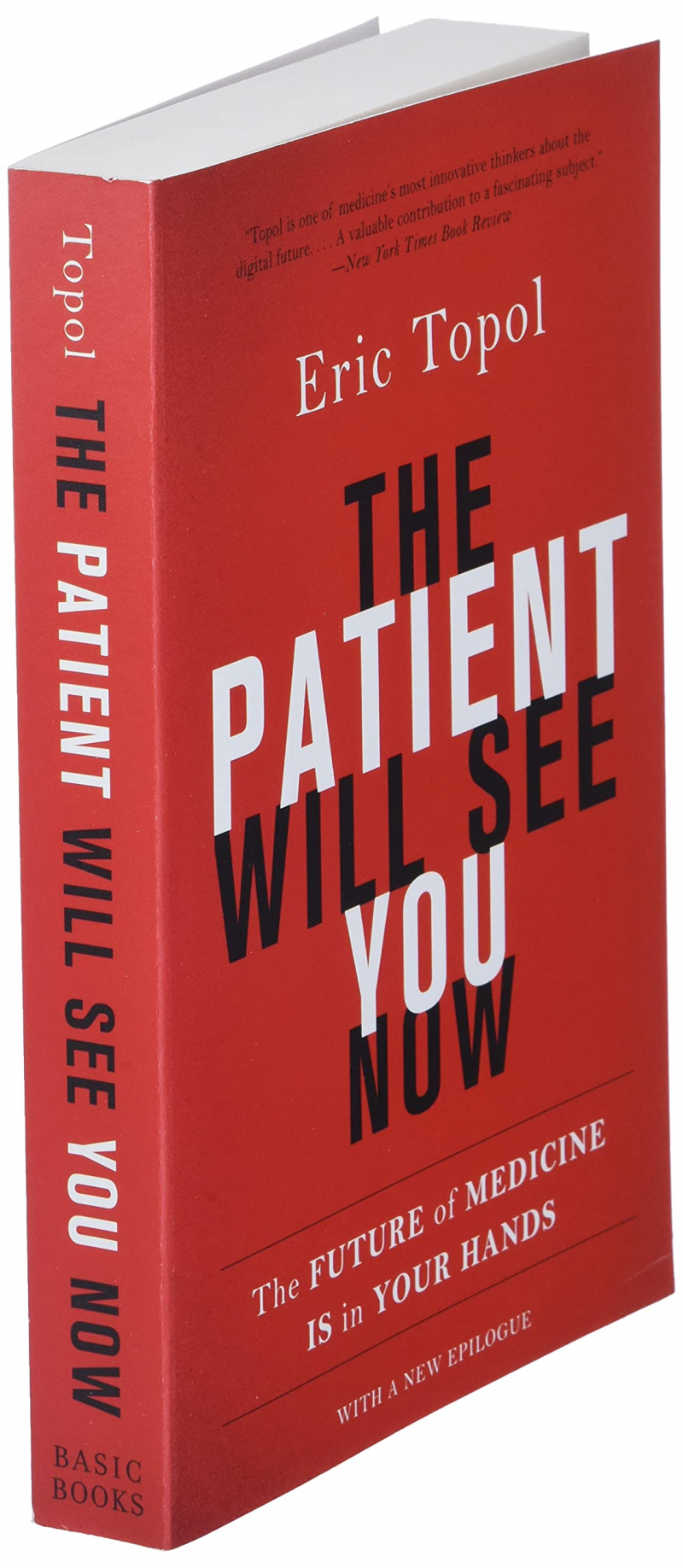
https://www.amazon.com/ 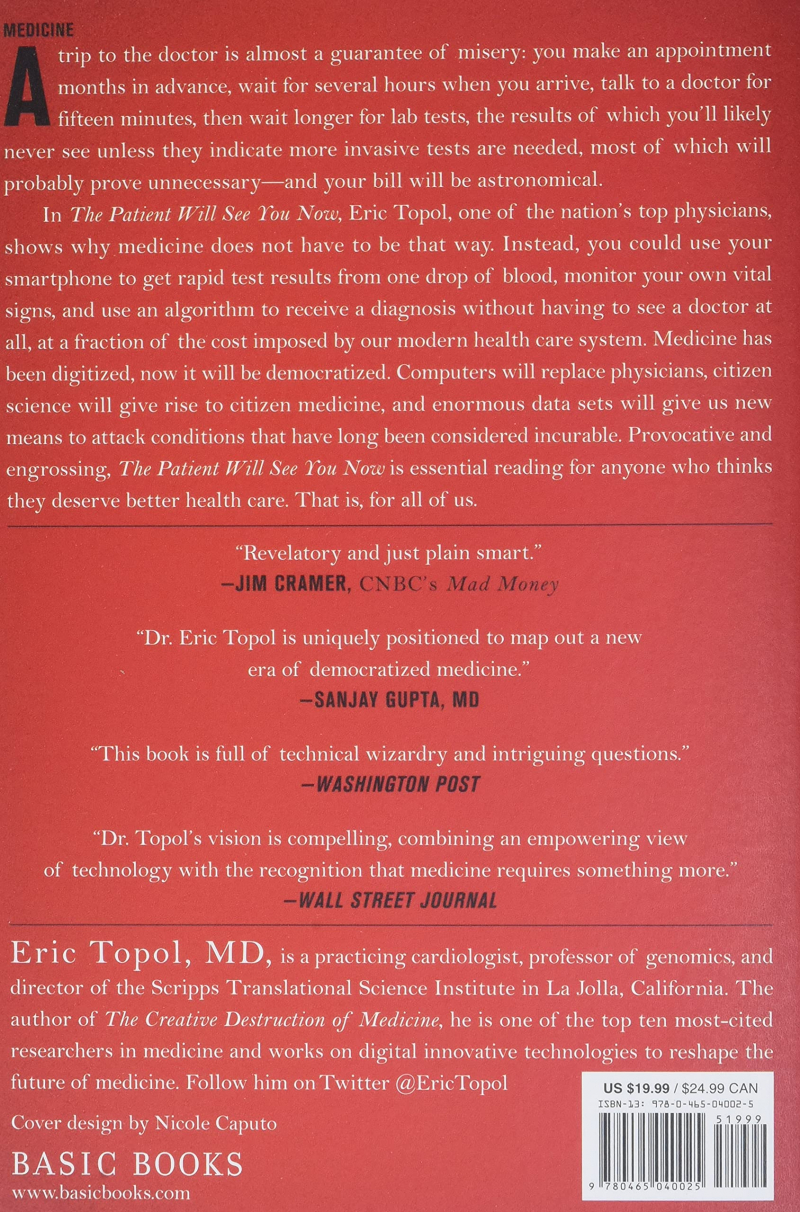
https://www.amazon.com/ -
The author is an Associate Professor at the Korea Advanced Institute of Science and Technology (KAIST). He has also been an IEEE Fellow since January 2020.
The goal of Geometry of Deep Learning is to give students insights into geometry that will help them grasp deep learning from a unified standpoint. Rather than defining deep learning as a technique for implementation, as is common in many existing deep learning publications, deep learning is described here as the ultimate form of signal processing procedures that may be conceived.
To back up this assertion, an overview of traditional kernel machine learning algorithms is offered, together with their benefits and drawbacks. Following a detailed discussion of the biological and computational building blocks of deep neural networks, the latest technologies such as attention, normalization, Transformer, BERT, GPT-3, and others are described. The emphasis here, too, is on the fact that beneath the intuition in these heuristic approaches is an important, beautiful geometric structure that allows for a systematic understanding. A unified geometric analysis is provided to comprehend the working mechanism of deep learning from high-dimensional geometry. Then, many types of generative models, such as GAN, VAE, normalizing flows, optimal transport, and so on, are explained from a unified geometric standpoint, demonstrating that they are derived from statistical distance-minimization concerns.
Geometry of Deep Learning can be used as an advanced deep learning textbook in universities or as a reference source for researchers interested in acquiring the latest deep learning algorithms and their underlying principles because it contains up-to-date information from both a practical and theoretical standpoint. Furthermore, the book was written for a codeshare course for students of both engineering and mathematics, so much of the information is interdisciplinary and will appeal to students from both disciplines.
Author: Jong Chul Ye
Link to buy: https://www.amazon.com/Geometry-Deep-Learning-Perspective-Mathematics/dp/981166045X/
Ratings: 5.0 out of 5 stars (from 3 reviews)
Best Sellers Rank: #118,911 in Books
#10 in Bioinformatics (Books)
#14 in Functional Analysis Mathematics
#17 in Differential Geometry (Books)
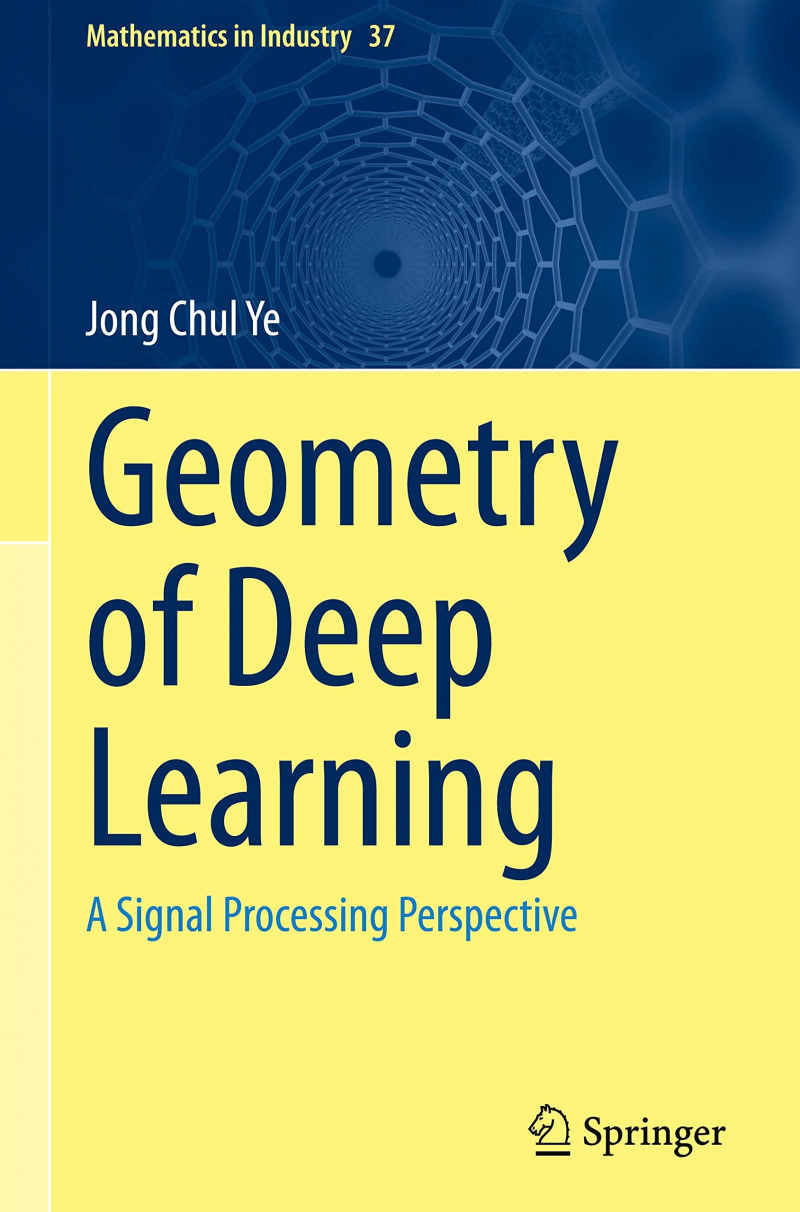
https://www.amazon.co.jp/ 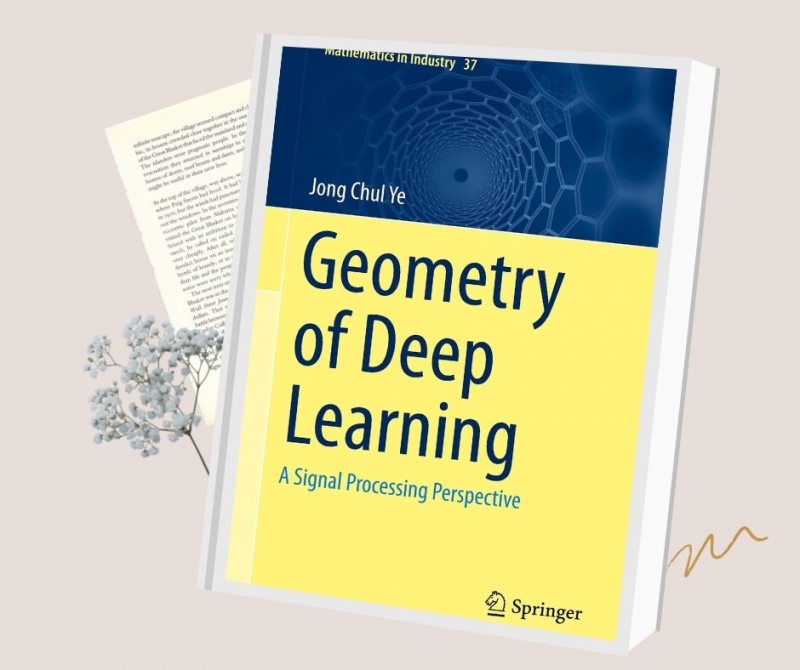
https://www.amazon.co.jp/












